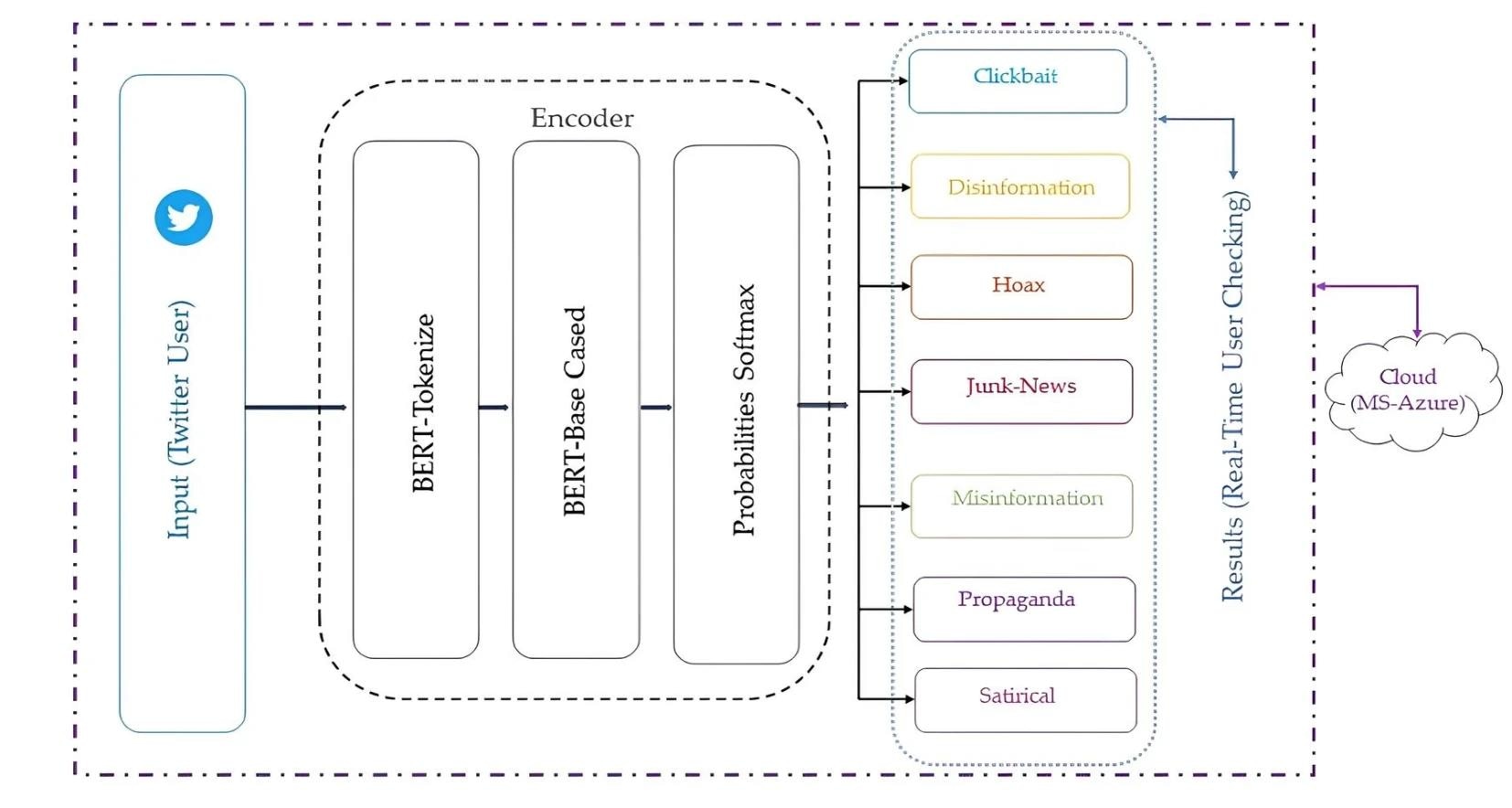The study addresses the growing spread of misinformation by using advanced machine learning and the bidirectional encoder representations from transformers (BERT) algorithm. This approach is particularly relevant during events like the coronavirus disease 2019 (COVID-19) pandemic and aims to protect users from the harmful effects of fake news.
Fake News Spread on Online Social Networks
The rapid growth of OSNs like Twitter, Facebook, and Instagram has transformed how people access and share news. However, this shift has also accelerated the spread of fake news, which can significantly impact society. The COVID-19 pandemic highlighted this issue, exposing how users may unintentionally share false information.
Traditional fake news detection methods have been primarily experimental and limited, often relying on small datasets and focusing on just one aspect of fake news. In contrast, the FANDC system is built on a substantial dataset of approximately 99 million tweets collected from the COVID-19-TweetIDs GitHub repository. To address these challenges, researchers are using machine learning and artificial intelligence (AI) to develop systems capable of detecting and reducing the effects of fake news more effectively.
FANDC: A Novel Framework for Fake News Detection
In this study, the authors developed the FANDC system to address the limitations of traditional fake news detection methods. FANDC categorizes fake news into seven specific types: clickbait, disinformation, hoaxes, junk news, misinformation, propaganda, and satire, allowing users to receive more detailed and user-centric feedback about the content they encounter.
 The general design of the FANDC model.
The general design of the FANDC model.
The researchers employed the cross-industry standard process for data mining (CRISP-DM) methodology, which involves structured steps, including data understanding, data preparation, modeling, evaluation, and deployment, to ensure thorough project development.
To start, they gathered over 99 million tweets related to COVID-19 from the COVID-19-TweetIDs GitHub repository. They enhanced the data by preprocessing it through tokenization, stemming, lemmatization, and removing punctuation and stop words, followed by classifying the dataset into the seven identified subcategories.
The FANDC system was trained using BERT, an advanced natural language processing (NLP) model, with data split into 80% for training and 20% for testing. The training process ran multiple times to achieve optimal model accuracy. Once trained, the system was deployed on Microsoft Azure, which offers a distributed, containerized structure to improve performance and security. This cloud-based deployment enables real-time detection and shields the system from potential cyber threats.
Findings of using FANDC
The study showed that the FANDC system achieved remarkable accuracy in detecting fake news across various categories. The model reached a 100% accuracy rate during training, with high performance observed across all seven subcategories during testing. For instance, it achieved 99% accuracy in identifying propaganda and 94% in detecting misinformation, substantially outperforming previous studies that reported around 90% accuracy.
The BERT algorithm's capability to understand language context and nuances contributed significantly to these results. These outcomes suggest that FANDC is well-suited for real-time detection while providing nuanced insights into misinformation, enabling users to make better-informed decisions regarding their shared content.
To validate the model’s generalization, the authors used K-Fold Cross-Validation, bolstering confidence in its robustness. They employed a confusion matrix and various metrics, including precision, recall, and F1 scores, to measure performance, with a high F1 score confirming balanced precision and recall. This highlighted the system's effectiveness in distinguishing true from false narratives.
Additionally, the study underscored the value of categorized feedback for users. By classifying fake news into seven distinct categories, FANDC helps users better understand misinformation, ultimately reducing the chance of unintentionally spreading false news and information on social networks.
Key Applications
The developed system has significant potential across different sectors. Social media platforms can leverage this technology to improve content moderation by alerting users to potential misinformation. Educational institutions can integrate FANDC into media literacy programs, highlighting the importance of verifying information before sharing.
FANDC provides insights into fake news dynamics and detection effectiveness for researchers and policymakers. Its cloud-based architecture, deployed on Microsoft Azure, enhances scalability and offers OSN users real-time, user-centric feedback, making it suitable for various applications. More broadly, FANDC could contribute to public health efforts by ensuring the spread of accurate information during crises like pandemics or natural disasters. By filtering misinformation, FANDC supports verifying content distribution, helping build a well-informed and resilient public.
Conclusion and Future Suggestions
In summary, the FANDC system effectively detected the spread of fake news on social media. It represents a significant step forward in real-time misinformation detection. The findings demonstrate its high accuracy and ability to categorize fake news into meaningful subcategories, providing users with essential feedback in near real-time.
Future work could focus on enhancing the system's capabilities by incorporating larger datasets and exploring the integration of advanced AI models, particularly large language models (LLMs) like open language model (OLMo), chat generative pre-trained transformer (ChatGPT), and GEMINI. Overall, the FANDC system emphasizes user-centric design to empower users and protect them from the detrimental effects of misinformation, contributing to a more informed society.